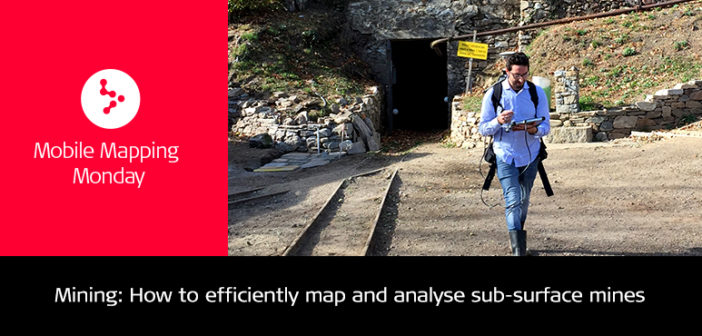A gold mine located in Sessa, Switzerland, was operated from 1858 until 1952. During the last years of its activity (1950-52) up to 500 kilograms of gold were extracted, which translates into revenues of 2 million Swiss Francs. However, despite the high concentration of gold and silver, the total cost of extraction by traditional excavation techniques, did not offer sufficient revenues to guarantee optimal economic management. The mine was therefore closed and until now has remained inaccessible to the public.

View of the mine shaft of Sessa Gold Mine, Switzerland
Recently the local community secured funds to recover the mine to protect and preserve it as an point of history and culture in the region. Surveyors have mapped the mine shaft to explore its more than 2000 metres of galleries on 4 floors while discovering a new flooded well. The part of the mine that currently concerns the surveyors is 400 m long with a main tunnel of 346 m. The galleries will be recovered, keeping their historical uniqueness and will be accessible to the public. The recovery works are divided into the internal and external areas.
A group of students of the Master’s degree programme in Geomatics of the Swiss Federal Institute of Technology in Zurich, Switzerland (ETH Zurich) are carrying out an interdisciplinary project were they have surveyed the gold mine in Sessa with different technologies including the Leica Pegasus:Backpack. The students will compare the methods and present a report with the results in January.
Benefits of the Pegasus:Backpack
The advantages of the Pegasus:Backpack for this project compared to other survey methods:
- Fast acquisition of the data – 15 minutes for total data capture outside and inside the mine
- Fast processing of the data – 45 min for LiDAR RGB point cloud delivery, plus 90 min with panorama images
- No shadow zones
- LiDAR data with intensity and RGB information
- Direct georeferentiation of the capture – the GNSS antenna allows users to process the data directly in absolute or local coordinate system
- Images – the pictures are essential in this environment for analysis and extraction of valuable information for logistics and safety reasons (e.g. status of pipes, cables)

3D point cloud and imagery captured of the pipes inside the mine
All the LiDAR data collected with the Pegasus:Backpack will be used for the creation of the 3D model which will be used to:
- Map the tunnel for tourist information and to market it as a tourist attraction
- Map and analyse the mining shaft for safety reasons
- Create a virtual 3D “fly through” navigation experience
- Generate a 3D printed scaled model for museum exposure

One of the benefit of collecting imagery includes the clear recognition of markings on the wall

Geo-located point cloud and image capture of the Sessa Gold Mine
Using the Pegasus:Backpack for mining applications
Active mine sites are dynamic environments. The mines change continuously and a traditional survey technique can be very time consuming. Thanks to the Pegasus:Backpack fast, complete, and accurate data acquisition, it’s easier for the mining management to share the survey information with other stakeholders, enabling them to analyse the data.
In addition, due to the very restrictive traffic options in the tunnels, a quick and periodic survey can be fundamental for reducing the operational risks; the Pegasus:Backpack can monitor the mine changes and present them in near real-time, helping to find the best scenario with the lowest necessary transportation capacity to achieve the planned production. The data that can be extracted directly from a Pegasus:Backpack survey are:
- detailed map: tunnel lengths, directions, tunnel sections, rooms dimensions, etc
- status of the pipes and pipes junctions (from images)
- status of the cables, electric boxes and connections (from images)
- status of the safety infrastructures (from lidar and images)
- status of the transportation system, e.g. rails (from lidar and images)
- analysis of markers and other punctual annotations on the walls (from images)
Other important info to extract from backpack data:
- 3D modelling for different purposes (engineering, touristic, safety)
- volume calculations: rock extraction volumes, rock transportation in-out, rooms, new tunnel sections, etc
- faults/fractures set analysis for geotechnical assessment (for both excavation strategies and stability analysis)
- transportation strategies: vehicles/devices displacement and storage
- More efficient organisation of the operations inside the mine

Valerio Marini
Customer Service & Support – Mobile Mapping
Leica Geosystems














